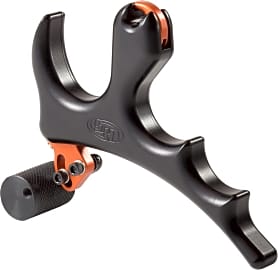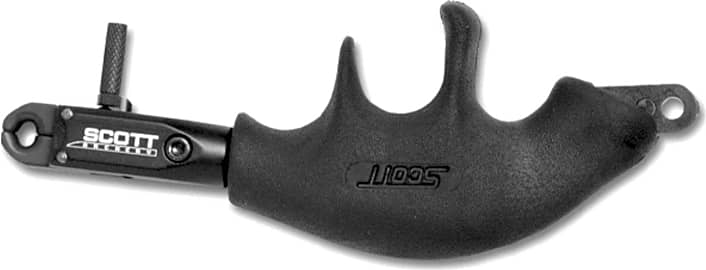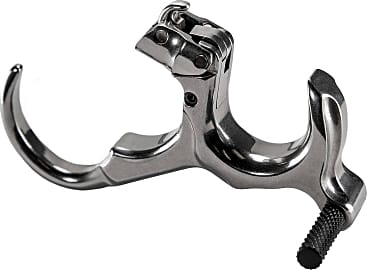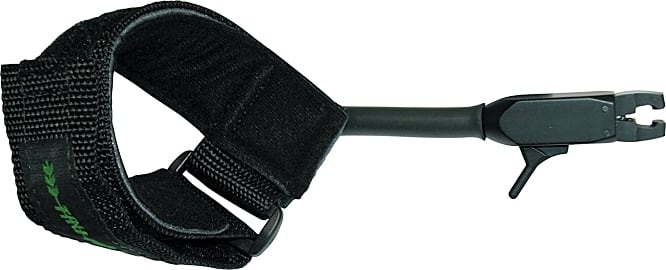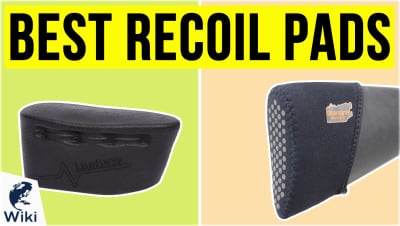The 9 Best Bow Releases

This wiki has been updated 33 times since it was first published in February of 2017. Capable of improving your accuracy and simply making the weapon easier to use, archery releases are a necessity for the modern compound bow user. But with such a variety of options out there, choosing the right one can be overwhelming. Our list includes some of the best units on the market, including both hand and wrist-style models as well as budget and professional-grade ones. When users buy our independently chosen editorial selections, we may earn commissions to help fund the Wiki.
Editor's Notes
March 12, 2021:
Our previous recommendations were pretty heavily weight toward index finger releases, so we removed a few such redundant models and replaced them with some mid-range and high-end models of the other two types. The most advanced newcomer is easily the Tru-Fire Synapse, which is as adjustable as anything on the market. If you don't need that much customizability, the Hot Shot Vapor 4 uses a similar trigger mechanism and is more comfortable for some users to hold.
Our other two additions are in the simpler, yet sometimes more difficult to use, hinge design. The Scott Archery Ascent Micro is an ultra-premium option that highly experienced archers will apreciate. On the other hand, the B3 Archery Ghost takes an already good design from B3, and adds a textured surface to ensure consistency and precision. Some archers resist the move to a hinge release, but overall, mastering this simple type can actually help improve your physical and psychological archery talents over time.
August 28, 2019:
If you want a nice clean release (and you should be striving for that on every shot), then you're going to want a release aid for your compound bow. There are a number of good reasons not to use one with a recurve bow, the most important being that recurves are simply not designed to handle the shock produced by the quick release of the string that release aids deliver. By contrast, modern compound bows are designed with release aids in mind.
Not only does an aid help create a clean release, but some archers also swear that it helps them overcome target panic--that fidgeting and bouncing that occurs when you try to hold the pins of your sight directly on the target. Another benefit is consistent accuracy. Those who shoot with their fingers are more likely to need more practice time to get consistently good groupings. This probably has to do with the release. No matter how good your technique, it takes time and movement to get your fingers out of the way of the string.
In this update, we evaluated our selections for effectiveness, quality, and value. We promoted the Tru-Fire Hardcore to one of our top slots because it meets those criteria. We also like that it fastens with a buckle. The last thing you want while in the woods is the loud rip of Velcro if you need to adjust your release.
July 20, 2019:
Newly updated for 2019, our list of best bow releases is more ready than ever to help you get the most out of your hunting season. Specifically, we've rearranged our top three picks to ensure that there's at least one option for every level of archer out there, from beginners on a budget to professionals looking to upgrade to the latest tech. We've moved the Tru-Fire Patriot up to #2, for example, in recognition that a solid wrist-release doesn't have to cost 100 bucks. At #3 we've added the Spot Hogg Wiseguy, a much-loved option great for novices aiming to up their game. And in the #1 slot we added the Hot Shot Vapor 4, a thumb-operated unit that is perfect for more experienced hands.
The Myriad Benefits Of Bow Releases
Instead, you’ll be using your arm muscles, which are larger and usually more developed than the ones in your fingers.
Archery is one of those hobbies that offers all manner of toys, gizmos, and accessories for participants to invest in, but few of these are as useful and rewarding as the bow release. These ultimately simple gadgets help you shoot more accurately and consistently, which is a boon whether you’re a target shooter or hunter. But they offer plenty of other advantages, as well.
For instance, a release with a wrist strap will take much of the tension off your digits. Instead, you’ll be using your arm muscles, which are larger and usually more developed than the ones in your fingers. This can help your draw become smoother and prevent fatigue.
A release is also easier to use in adverse conditions, such as low temperatures or rain. When your hands become cold, your dexterity suffers, which will make a finger release less precise. Rain can cause your fingers to slip, plain and simple. But when you use a bow release, the way these conditions affect your hands is less likely to transfer to your shooting. You can also more easily wear gloves.
Additionally, a bow release makes it more difficult for you to accidentally dry fire a compound bow. Ideally, you’d always have an arrow nocked, but there are times when it isn’t possible; if your fingers accidentally slip, the results will be anything but good. Dry firing, also called dry loosing, can break the string or even destroy the bow itself. Why? Because the tension that should have been released into the arrow ends up released back into the bow itself, which can break or imbalance its parts.
And finally, as mentioned, releases give you more uniform results. This is for several reasons. For one, they invite less wobbling than your fingers, as they do not inadvertently cause any side-to-side motion. For another, they’re mechanical and not subject to fatigue or touching the string differently. Of course, you’ll still need to employ proper technique and avoid jerky movements, but as with many undertakings, a little practice will help you achieve dependable results.
Basic Types Of Bow Releases
Not all bow releases are the same. Generally speaking, they can be divided into two different groups, the wrist type and the T-handle type. Hunters often opt for the former, whereas target and tournament shooters might go for the latter, but really, these bow releases can be used for any kind of archery.
Both the size of the wrist closure and the length between the trigger and wrist should be adjustable on these models, since not everyone has hands that are the same size.
The first, the wrist type, take their name from the loop that wraps around the user’s wrist. Both the size of the wrist closure and the length between the trigger and wrist should be adjustable on these models, since not everyone has hands that are the same size. They’re also sometimes called caliper releases, since it’s a caliper that releases the string when you pull the trigger. The one drawback to this type is that it is easy for archers to punch or jerk the trigger, which can lead to inaccuracies. Proper technique that uses smooth motion, however, can go a long way toward alleviating this.
The second type, the T-handle, goes by other names, including handhelds and finger releases. Within this category, a further subdivision occurs between the thumb trigger release and the back-tension release. Both of these you operate less by pulling a trigger and more by increasing pressure on the device by engaging the back muscles. Because this force causes the shot to occur while the archer is slowly increasing tension, and not at a set moment as with a traditional trigger, these devices may offer a smoother experience.
In the end, however, there is no inherent feature that makes one type better than the other. Much of a preference for one or the other is based on personal skill level, dexterity, enjoyment, and goals. For instance, if an archer has a lot of difficulties using a T-handle model, then the wrist type may be smoother for him or her or vice versa.
Beating Target Panic With A Release
Ever since Holless Wilbur Allen Jr. invented the compound bow in the 1960s, archers who enjoy both hunting and target competitions have invented more and greater tools and methods to make this form of sport more enjoyable and efficient. One problem that practitioners consistently run into, though, is target panic, or a type of disruption in ability with attendant poor accuracy with which some archers may be afflicted.
The exact mechanism that triggers target panic isn’t well understood, but a couple of suggestions have been put forward.
Target panic rears its head in various ways and causes a range of symptoms. Some individuals face paralysis and are unable to move their bow all the way into position, while others jump, twitch, or release the arrow prematurely of being properly sighted. No matter how it manifests, the end result is almost always the same: the inability to progress beyond a certain level of accuracy.
There’s no shame in grappling with target panic, as it’s a common-enough problem that archers of all skill levels have had to face. The exact mechanism that triggers target panic isn’t well understood, but a couple of suggestions have been put forward. Conventional wisdom has long ascribed it to a type of performance anxiety or psychological disturbance, although the admittedly paltry research into this phenomenon has indicated that it might be a form of focal dystonia, better known in athletic circles as the yips.
For those who face this problem, changing to a new type of compound bow release may offer a solution. A back-style release, because it requires a smooth, steady motion, can help retrain the body and mind to move with evenness, removing the slight jerkiness that can sometimes attend a trigger-type release. Switching may also force the mind to re-focus, helping the archer to “reset” in a way. Some experts even suggest that once the mind and body have been retrained, the benefits will last even if archers go back to their old release mechanisms. As target panic is a complicated psychological problem, those who are working through it must be patient, no matter the type of bow release they are training with and using.



